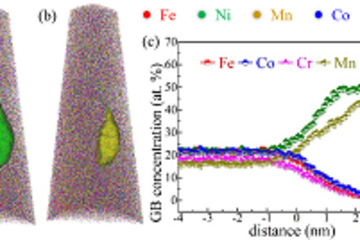All genres
21.
Talk
Mobility of Water and Charge Carriers in Polymer/Oxide/Aluminium Alloy Interphases. M2i/DPI Project Meeting, Delft, The Netherlands (2009)
22.
Talk
A New Approach to Determine Ion Mobility Coefficients for Delamination Scenarios. electrochem09 and 50th Corrosion Science Symposium, Manchester, UK (2009)
23.
Talk
A New Approach to Determine Ion Mobility Coefficients for Delamination Scenarios. 60th Annual Meeting of the International Meeting of the International Society of Electrochemistry, Beijing, China (2009)
24.
Talk
Effects of Semiconducting Properties of Surface Oxide on the Delamination at the Polymer/Zinc Interface. SurMat Seminar, Kleve, Germany (2008)
25.
Poster
Ion Mobility Studies on Al2O3 Surfaces. Gordon Research Conference "Corrosion - Aqueous", New London, NH, USA (2012)
26.
Poster
Mobility of Water and Charge Carriers in Polymer/Oxide/Aluminium Alloy Interphases. M2i Conference 2011, Noordwijkerhout, The Netherlands (2011)
27.
Poster
Scanning Kelvin Probe (SKP) as a tool for monitoring ion mobility on insulators. M2i Conference 2009, Noordwijkerhout, The Netherlands (2009)
28.
Poster
A New Approach to Determine Ion Mobility Coefficients for Delamination Scenarios. ECASIA´09, Antalya, Turkey (2009)
29.
Poster
Novel Scanning Kelvin Probe for Integration into Synchrotron Beamline. 1st EIROforum School on Instrumentation, Geneva, Switzerland (2009)
30.
Poster
Effects of the Semiconducting Properties of Surface Oxide on the Delamination at the Polymer/Metal Interface. 2nd International IMPRS-SurMat Workshop, Bochum, Germany (2008)
31.
Thesis - PhD
Monitoring of the oxide-chemistry controlled surface ion mobility. Dissertation, Fakultät für Maschinenbau, Lehrstuhl Werkstoffwissenschaft, Ruhr-Universität Bochum, Bochum, Germany (2013)











